
Silphium is a genus of North American plants in the sunflower tribe within the daisy family.

Rudbeckia is a plant genus in the Asteraceae or composite family. Rudbeckia flowers feature a prominent, raised central disc in black, brown shades of green, and in-between tones, giving rise to their familiar common names of coneflowers and black-eyed-susans. All are native to North America, and many species are cultivated in gardens for their showy yellow or gold flower heads that bloom in mid to late summer.

Liatris is a genus of flowering plants in the boneset tribe within the sunflower family native to North America. Its most common name is blazing star. Some species are used as ornamental plants, sometimes in flower bouquets.

Hydrangea arborescens, commonly known as smooth hydrangea, wild hydrangea, sevenbark, or in some cases, sheep flower, is a species of flowering plant in the family Hydrangeaceae. It is a small- to medium-sized, deciduous shrub up to 3 m (10 ft) tall that is native to the eastern United States.

Uvularia grandiflora, the large-flowered bellwort or merrybells, is a species of flowering plant in the family Colchicaceae, native to eastern and central North America.
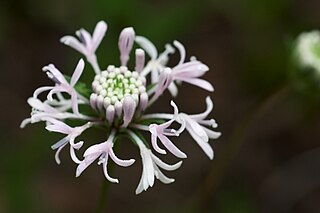
Marshallia mohrii is a perennial herb species, endemic to the Southeastern United States, in several locations in Alabama, Georgia, and Florida. The first recorded discovery of the species was in 1882 by Dr. Charles Mohr, hence the botanical species name and common name.
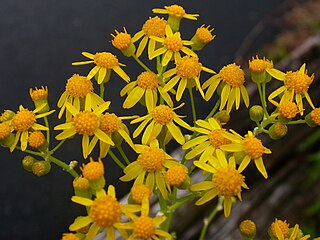
Packera anonyma, called Appalachian ragwort and Small's ragwort, is a flowering plant in the Asteraceae.

Brodiaea coronaria is the type species of Brodiaea and also known by the common names harvest brodiaea and crown brodiaea. It is native to western North America from British Columbia to northern California, where it grows in mountains and grasslands.
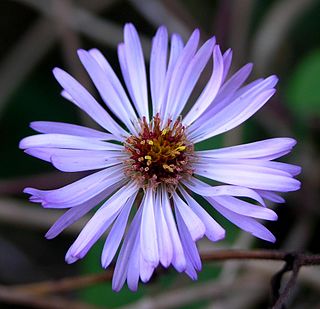
Ampelaster is a North American genus of flowering plants in the daisy family.

Sericocarpus is a genus of North American plants in the aster tribe within the sunflower family. Whitetop aster is a common name for the genus.

Lygodesmia, called skeletonplant, is a genus of North American flowering plants in the dandelion tribe within the sunflower family.

Pityopsis is a genus of North American plants in the aster tribe within the sunflower family. Species of Pityopsis are known by the common names silkgrass or golden asters or grass-leaved goldenasters.
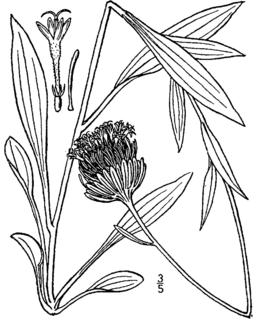
Marshallia grandiflora, the Appalachian Barbara's buttons, is an extinct species of flowering plant in the genus Marshallia within the sunflower family. It was endemic to the Blue Ridge Mountains of North Carolina in the Eastern United States, in Henderson and Polk counties. It was found primarily along gravelly and sandy bars along high-gradient rivers, and was presumably wiped out due to changes in this restricted habitat. It was last sighted in 1919.

Polypremum is a flowering plant genus in the family Tetrachondraceae. The genus contains the single species Polypremum procumbens, commonly known as juniperleaf or rustweed. Polypremum has also been placed in the various families Buddlejaceae, Loganiaceae, Rubiaceae, and most recently in its own Polypremaceae.
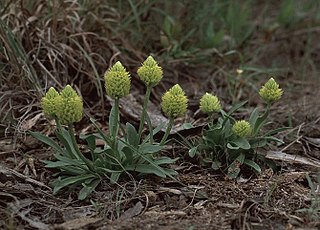
Polygala nana, commonly known as candyroot or low bachelors' buttons, is a small herbaceous plant native to the southeastern United States. The root has a sweet liquorice flavor when it is chewed, but it is usually hidden underground until the plant flowers. The seeds of candyroot are dispersed by ants.

Oxypolis rigidior, known as cowbane, common water dropwort, stiff cowbane, or pig-potato, is a species of flowering plant in the carrot family native to eastern North America. It is a perennial wildflower found in wet habitats. Oxypolis rigidior is poisonous to mammals.

Potentilla simplex, also known as common cinquefoil or old-field five-fingers or oldfield cinquefoil, is a perennial herb in the Rosaceae (rose) family native to eastern North America from Ontario, Quebec, and Labrador south to Texas, Alabama, and panhandle Florida.
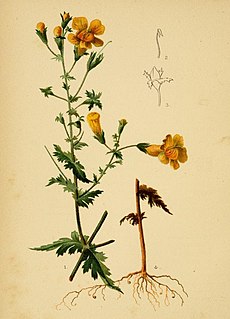
Aureolaria pedicularia, the fernleaf yellow false foxglove, fern-leaved false foxglove, or fernleaf false foxglove, is a parasitic plant of the family Orobanchaceae. Aureolaria pedicularia is native to parts of the eastern US, the Midwest, and adjacent Canada. This plant is known for its distinct leaf shape and overall plant size. The common names for Aureolaria pedicularia come from its fern-like leaves.
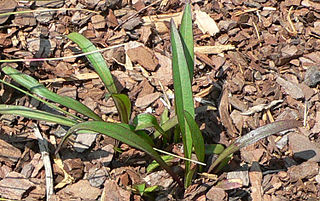
Marshallia graminifolia is a perennial herb species, endemic to the coastal plains of the Southern United States, where it often grows in bogs and in sunny locations. Like all species in the genus Marshallia, it has the common name Barbara's buttons, and is specifically known as grassleaf Barbara's buttons.
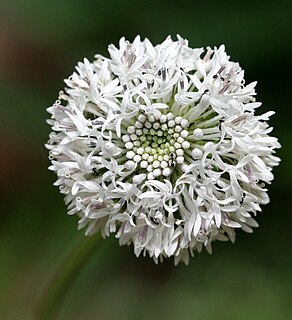
Marshallia obovata, also known as spoonshape Barbara's buttons and Piedmont Barbara's buttons is a flowering plant species in the Aster family. It is endemic to the Southern United States, especially in the state of North Carolina.




















